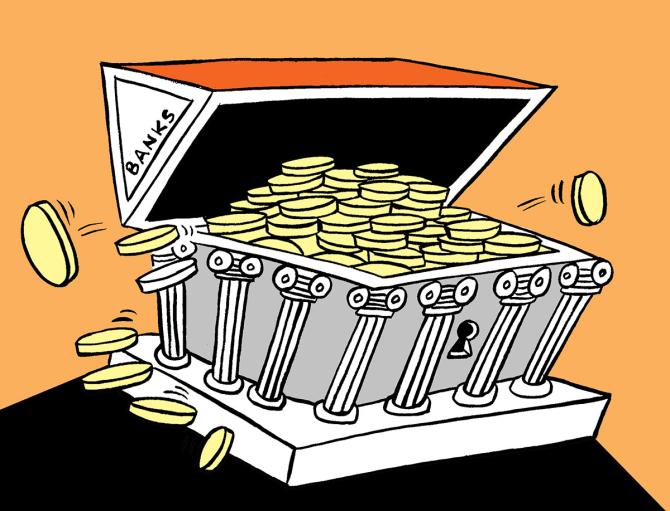Public sector banks (PSBs) have delivered significant outperformance over the past three years and the sector has been re-rated.

Given the growth and profitability expectations of an 18 per cent return on equity (RoE) over FY24-26, there is still a case for buying at the current levels.
While the net interest margins or NIMs may remain range-bound or have a downward bias, there’s optimism about possibly better opex ratios and lower non-performing assets (NPAs), plus scope for further credit cost reduction, and healthy treasury performances as interest rates trend down.
Moreover, PSBs are raising capital and they have stronger CAR (Capital Adequacy Ratios), which indicates that they are looking to expand credit as the business cycle goes forward.
In FY23 and FY24 (7 quarters of two fiscals) they reported higher earnings than in the past decade ending FY22.
Historically, private banks have always been favoured due to their increase in market share, better asset quality, and higher return ratios.
While the market share of PSBs (both in deposits and advances) has declined, the pace of market share erosion in loans has moderated significantly.
The recent fund raises and stronger balance sheets have contributed to healthy loan growth.
In FY23, PSBs saw a loan growth rate of 17 per cent, almost the same as 18 per cent from private banks.
PSBs also have low credit-deposit (CD) ratios and ample liquidity, and hence credit growth should be robust.
In asset quality, PSBs have shown dramatic improvement.
Gross NPAs peaked at 14.6 per cent in March 2018 and dropped to 3.7 per cent in FY24 (Dec 23).
The aggregate PCR is estimated to improve to 78 per cent in FY24 from 48 per cent in FY18.
The net NPA ratios of 0.8 per cent may be broadly comparable to private banks and this means reduced credit costs.
However, PSBs still have higher aggregated gross NPA ratio at 3.7 per cent (private banks are around 2 per cent) and a much bigger total technically written-off (TWO) pool, in aggregate over Rs 10.5 trillion.
As the business cycle improves, there have been significant recoveries from the pool which has boosted revenue and led to provision reductions.
This recovery rate may ease off going into H2FY25 and FY26.
Analysts are, however, seeing mid-teens or better growth in year-on-year (Y-o-Y) PAT for the larger PSBs in FY25 over FY24.
Part of these estimates are based on the RBI changing its currently tight liquidity stance going forward and until that happens, NIMs will be compressed.
The central bank’s recent hike of risk weights on the unsecured loans segment could also lead to a moderation in growth rates in that segment.
However, these are minor caveats given the strong positives in terms of higher CAR, higher return ratios, and better asset quality as well as the strong growth rates.
The Nifty PSU Bank index is up 65 per cent in the last 12 months and it hit a record high this month before seeing a 6.5 per cent correction.
Since FY21 till March 24, the aggregated market capitalisation of the PSBs has risen from Rs 5.5 trillion to Rs 16.5 trillion.
The consensus remains optimistic about the sector.
Disclaimer: This article is meant for information purposes only. This article and information do not constitute a distribution, an endorsement, an investment advice, an offer to buy or sell or the solicitation of an offer to buy or sell any securities/schemes or any other financial products/investment products mentioned in this article to influence the opinion or behaviour of the investors/recipients.
Any use of the information/any investment and investment related decisions of the investors/recipients are at their sole discretion and risk. Any advice herein is made on a general basis and does not take into account the specific investment objectives of the specific person or group of persons. Opinions expressed herein are subject to change without notice.










